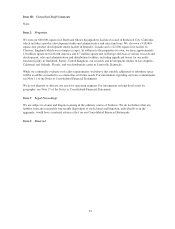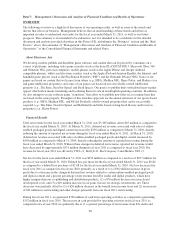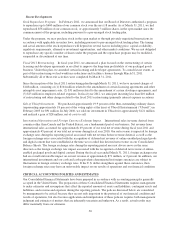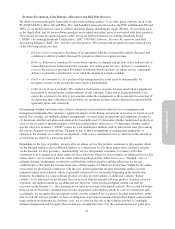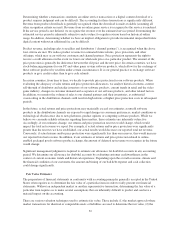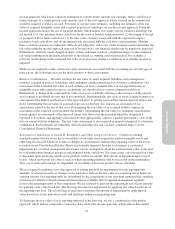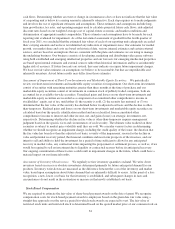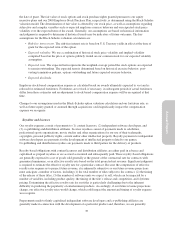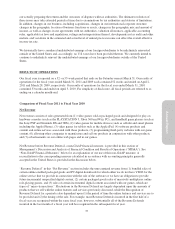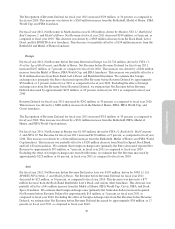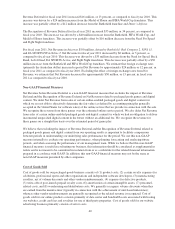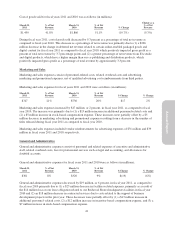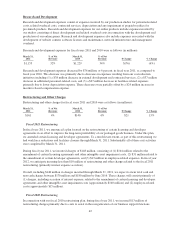Electronic Arts 2011 Annual Report Download - page 109
Download and view the complete annual report
Please find page 109 of the 2011 Electronic Arts annual report below. You can navigate through the pages in the report by either clicking on the pages listed below, or by using the keyword search tool below to find specific information within the annual report.
Annual Report
income approach, which uses valuation techniques to convert future amounts (for example, future cash flows or
future earnings) to a single present value amount, and (3) the cost approach, which is based on the amount that
would be required to replace an asset. For many of our fair value estimates, including our estimates of the fair
value of acquired intangible assets and acquired in-process technology, we use the income approach. Using the
income approach requires the use of financial models, which require us to make various estimates including, but
not limited to (1) the potential future cash flows for the asset or liability being measured, (2) the timing of receipt
or payment of those future cash flows, (3) the time value of money associated with the expected receipt or
payment of such cash flows, and (4) the inherent risk associated with the cash flows (risk premium). Making
these cash flow estimates are inherently difficult and subjective, and, if any of the estimates used to determine the
fair value using the income approach turns out to be inaccurate, our financial results may be negatively impacted.
Furthermore, relatively small changes in many of these estimates can have a significant impact to the estimated
fair value resulting from the financial models or the related accounting conclusion reached. For example, a
relatively small change in the estimated fair value of an asset may change a conclusion as to whether an asset is
impaired.
While we are required to make certain fair value assessments associated with the accounting for several types of
transactions, the following areas are the most sensitive to these assessments:
Business Combinations. We must estimate the fair value of assets acquired, liabilities and contingencies
assumed, acquired in-process technology, and contingent consideration issued in a business combination. Our
assessment of the estimated fair value of each of these can have a material effect on our reported results as
intangible assets and acquired in-process technology are amortized over various estimated useful lives.
Furthermore, a change in the estimated fair value of an asset or liability often has a direct impact on the amount
we recognize as goodwill, an asset that is not amortized. Determining the fair value of assets acquired requires an
assessment of the highest and best use or the expected price to sell the asset and the related expected future cash
flows. Determining the fair value of acquired in-process technology also requires an assessment of our
expectations related to the use of that asset. Determining the fair value of an assumed liability requires an
assessment of the expected cost to transfer the liability. Determining the fair value of contingent consideration
issued requires an assessment of the expected future cash flows over the period in which the obligation is
expected to be settled, and applying a discount rate that appropriately captures a market participant’s view of the
risk associated with the obligation. This fair value assessment is also required in periods subsequent to a business
combination. Such estimates are inherently difficult and subjective and can have a material impact on our
Consolidated Financial Statements.
Assessment of Impairment of Goodwill, Intangibles, and Other Long-Lived Assets. Current accounting
standards require that we assess the recoverability of our finite lived acquisition-related intangible assets and
other long-lived assets whenever events or changes in circumstances indicate the remaining value of the assets
recorded on our Consolidated Balance Sheets is potentially impaired. In order to determine if a potential
impairment has occurred, management must make various assumptions about the estimated fair value of the asset
by evaluating future business prospects and estimated future cash flows. For some assets, our estimated fair value
is dependent upon predicting which of our products will be successful. This success is dependent upon several
factors, which are beyond our control, such as which operating platforms will be successful in the marketplace.
Also, our revenue and earnings are dependent on our ability to meet our product release schedules.
We are required to perform a two-step approach to testing goodwill for impairment for each reporting unit
annually, or whenever events or changes in circumstances indicate the fair value of a reporting unit is below its
carrying amount. Our reporting units are determined by the components of our operating segments that constitute
a business for which (1) discrete financial information is available and (2) segment management regularly
reviews the operating results of that component. We are required to perform the impairment test at least annually
by applying a fair value-based test. The first step measures for impairment by applying fair value-based tests at
the reporting unit level. The second step (if necessary) measures the amount of impairment by applying fair
value-based tests to the individual assets and liabilities within each reporting unit.
To determine the fair value of each reporting unit used in the first step, we use a combination of the market
approach, which utilizes comparable companies’ data, and/or the income approach, which utilizes discounted
33



